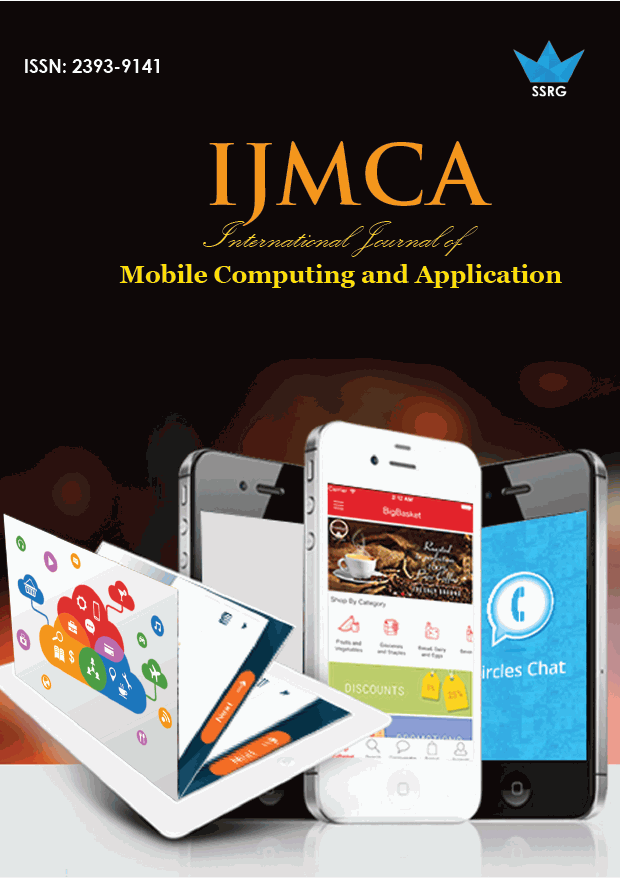A Light Weight Hybrid Approach to Detect Code Clones

| International Journal of Mobile Computing and Application |
| © 2015 by SSRG - IJMCA Journal |
| Volume 2 Issue 3 |
| Year of Publication : 2015 |
| Authors : Dr.G.Anil Kumar |
How to Cite?
Dr.G.Anil Kumar, "A Light Weight Hybrid Approach to Detect Code Clones," SSRG International Journal of Mobile Computing and Application, vol. 2, no. 3, pp. 13-21, 2015. Crossref, https://doi.org/10.14445/23939141/IJMCA-V2I6P106
Abstract:
Code cloning is the process of reusing the code portions of different parts of the same project or proven good portions of different projects. The harmfulness of code clones are presented by the literature of the code cloning. In this paper we are proposing a hybrid light weight approach to detect various types of clones.
Keywords:
Clone Detection Process
References:
[1] IEEE. Standard for Software Maintenance.IEEE Standard 1219, 1998.
[2] ISO/IEC. Software Engineering - Software Maintenance. ISO/IEC 14764, 1999.
[3] L. Arthur. Software Evolution: The Software Maintenance Challenge. Wiley, 1988.
[4] S. W. L. Yip and T. Lam.A software maintenance survey. In Proc. of the 1st Asia-Pacific Software Engineering Conference, pages 70–79, Dec 1994.
[5] S. Chidamber and C. Kemerer.A metric suite for object-oriented design. IEEE Transactions on Software Engineering, 25(5):476–493, Jun 1994.
[6] ClearCase. http://www-306.ibm.com/software/awdtools/clearcase/.
[7] Robert Tairas, “Clone detection and refactoring”, Proceeding of OOPSLA '06 Companion to the 21st ACM SIGPLAN symposium on Object-oriented programming systems, languages, and applications, pp. 780-781, New York, USA, 2006
[8] Chanchal K. Roy, James R. Cordya and Rainer Koschkeb, “Comparison and Evaluation of Code Clone Detection Techniques and Tools: A Qualitative Approach”, Journal Science of Computer Programming, Vol. 74, No.7, pp. 470-495, May 2009.
[9] Ira D. Baxter, Andrew Yahin, Leonardo Moura, Marcelo Sant Anna and Lorraine Bier, “Clone Detection Using Abstract Syntax Trees”, Proceedings of the International Conference on Software Maintenance, pp. 368, Washington DC, USA 1998
[10] G.Anil Kumar, Dr.CRK.Reddy, Dr.A.Govardhan “Code duplication in Software Systems: A survey”, International Journal of Software Engineering Research & Practices Vol.2, Issue 1, Jan 2012
[11] M. Fowlor. Refactoring: improving the design of existing code. Addison Wesley, 1999.
[12] R. H. Page. http://www.refactoring.com/.
[13] MagielBruntink, Arie van Deursen,Remco van Engelen, and Tom Tourwe, "On the Use of Clone Detection for Identifying Crosscutting Concern Code", Ieee Transactions On Software Engineering, Vol. 31, No. 10,pp. 804-818, October 2005
[14] Abouelhoda M.I., Kurtz S.andOhlebusch E, "The enhanced suffix array and its applications to genome analysis", In Proc. Workshop on Algorithms in Bioinformatics, vol. 2452,pp. 449–463, Berlin, 2002
[15] Hamid Abdul Basit and Stan Jarzabek, "Detecting Higher-level Similarity Patterns in Programs", European Software Engineering Conference and ACM SIGSOFT Symposium on the Foundations of Software Engineering, pp 1-10 Lisbon, Sept. 2005
[16] Lingxiao Jiang, Zhendong Su and Edwin Chiu, “Context-based detection of clone-related bugs”, Proceedings of the 6th joint meeting of the European software engineering conference and the ACM SIGSOFT symposium on The foundations of software engineering, pp. 55 – 64, New York, USA, 2007.
[17] Chanchal Kumar Roy and James R Cordy, “A Survey on Software Clone Detection Research”, Computer and Information Science, Vol. 115, No. 541, pp. 115, 2007

 10.14445/23939141/IJMCA-V2I6P106
10.14445/23939141/IJMCA-V2I6P106